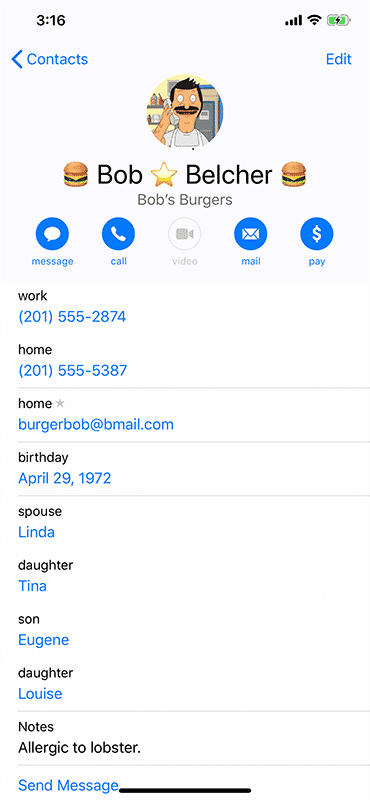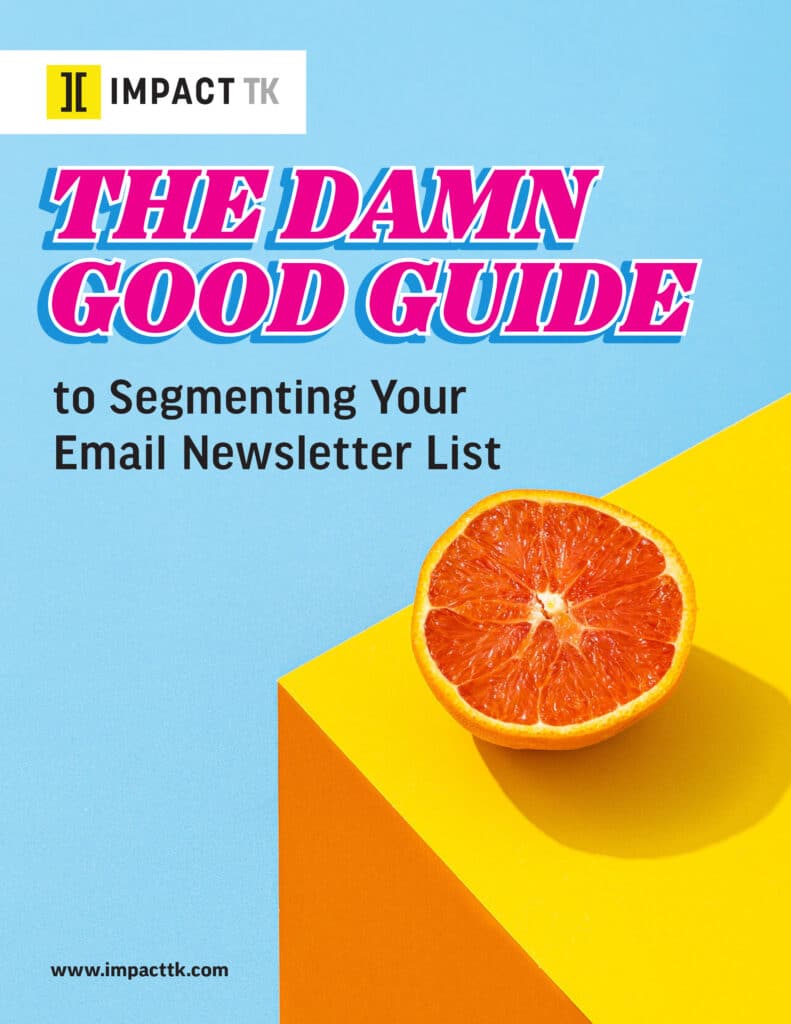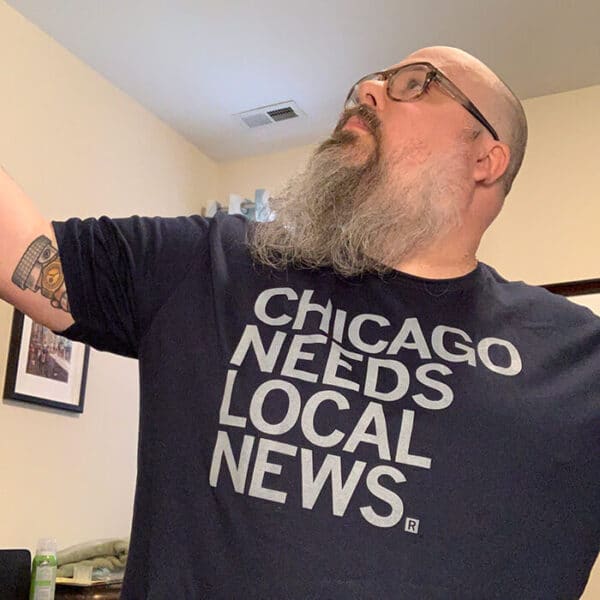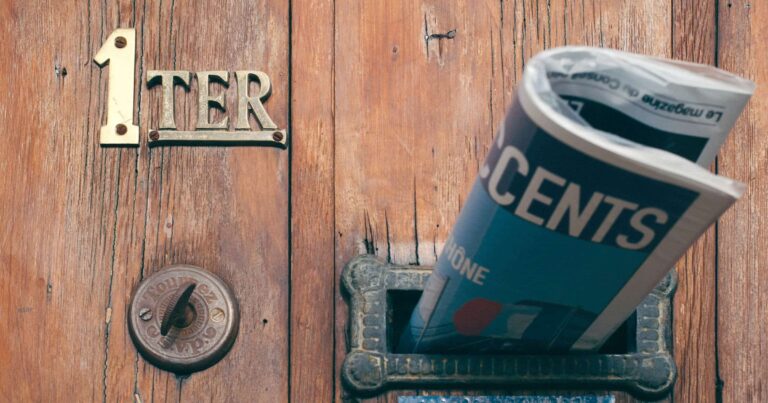4 easy ways to get started with newsletter segments
A common piece of newsletter advice says to make it personal. Write to a single person. Good advice, but that’s easier said than done. It’s hard. Your list includes all kinds of different people, right?
This newsletter was launched as a guide for journalists. Not long after the first one went out, other smart people who aren’t journalists were signing up. Musicians. Industrial designers. Financial advisers.
So how do you make a newsletter that’s personal, but also works?
The secret power of newsletter segments
Segments are a smart way to make your list work for you. Newsletter segments help you meet your subscribers where they are, with an email that is relevant and useful.
But, segmenting a newsletter can be intimidating. It sounds technical. How do you know what segments to use? Not to worry. You already have the information to create useful newsletter segments.
In fact, we all use segments to organize people based on our relationships.
Here’s an everyday example: Your phone vibrates on your desk. It’s a number from your area code, with your city and state underneath the number. It looks familiar. Is this the pharmacy? Or maybe the dry cleaner? Eh, let it go to voice mail.
Later that night, you get a FaceTime request. It’s your best friend, with their name — or nickname — and their photo. You pick it up before the first ring ends.
This is segmenting, even though it’s on your phone.
There are numbers you don’t put in your contacts, like the bakery where you ordered a cake from the other day. They have permission to contact you, but you aren’t close. You only want to hear from them when you are waiting to pick up an order. (Unless it’s Dominique Ansel’s bakery. They are magicians and can invite me over anytime.)
On the other hand, compare to your best friend. They aren’t only in your contacts, but the profile is all filled out. Photo, emoji in the name, address, birthday, the works. You segmented your contacts. And this person is in the VIP segment, whereas other contacts may only have a name and number.

Relevant + Useful + Anticipated = Email Greatness
Segments give you the power to meet each subscriber group where they are.
For example, you send a welcome email to new signups, don’t you? You are sending a targeted email to a New Subscriber Segment.
The best newsletters have these 3 key characteristics:
- They are relevant to the reader’s interests.
- They are useful to the reader.
- They are anticipated by the reader.
Newsletter segments are levers to deliver value that is more relevant than one big blast.
How well do newsletter segments work?
A Mailchimp study found that segmented campaigns outperformed non-segmented campaigns in basic metrics. Check it out:
- Open rates were 14.31% higher in segmented campaigns.
- Clicks were 100.95% higher in segmented campaigns.
- Unsubscribes were 9.37% lower in segmented campaigns.
- Spam complaints were 3.90% lower in segmented campaigns.
But those are the high-level numbers. What about when you “segment” the metrics and drill down deeper?
For lists segmented by signup date, Opens were 29.56% higher and clicks were 51.64% higher.
For Lists segmented by reader interest, Clicks were 74.53% higher, Unsubscribes was 25.65% lower and spam complaints were 17.78% lower.
Take 10 seconds to think about what your subscribers’ inboxes look like. Most people get a lot of emails from all sorts of sources. There’s tremendous competition for their attention.
Subscribers always notice when you waste their time.
Readers love newsletters that succeed in those three areas: relevant, useful, and anticipated. What levers can you pull to help your newsletter succeed on these three points?
Segment Idea #1: Customers and Non-customers
One easy place to start with segments is tagging people who give you money, and people who do not give you money. You have a different relationship with these two segments of people.
- In a for-profit newsroom, this is subscribers, non-subscribers, and former subscribers.
- In a nonprofit, this is your donor level: major donors, individual donors, one-time donors, and non-donors.
- This could also be people who made past purchases, the people who bought a product in your online store, or attended an event.
Segmenting active customers should be one of the first steps of your retention strategy.
Segment Idea #2: Topics of interest
Seems pretty straightforward, right? If you ask for email preferences, make good use of those email preferences.
Additionally, you can see what topics resonate more with newsletter readers versus your other audiences. There are probably some significant differences.
Do you send out surveys? I’m generally not a big fan of surveys, but if you have responses, there are newsletter segments in there. Using survey data to segment and test ideas will yield a higher return on your time than the results alone.

FREE RESOURCE
Damn Good Guide to Segmenting Your Email Newsletter List
Stop blasting and start personalizing! This Damn Good Guide includes real segments newsrooms can use + step-by-step screenshots for setting up your first segment in Mailchimp!
Segment Idea #3: Most loyal readers
Loyal audiences are your most important audience. Take care of them.
Segment your most enthusiastic subscribers. Segment the people who open 75% or more of the emails you send. Or segment the people who make the jump from your daily email to your main site 3x per week.
Segment Idea #4: Event attendees and swag shoppers
Do you collect email addresses with event tickets? Don’t just add them to your newsletter and start firing off spam. Tag their email addresses, then send this segment an exclusive early bird ticket offer for the next event.
If you set up a booth at a community street fair, tag the email addresses you collect. You’ll have a newsletter segment of people full of insights about specific communities you cover.
Do you sell swag? I’m not a big swag fan, but I have a great Block Club Chicago t-shirt and a tote bag. I’m a different audience than someone who reads Block Club every day but doesn’t buy their promotional items.

Caution: People aren’t demographics
Subscribers are real people, with real lives and interests. Be very careful not to substitute demographics for people. Lots of segmentation advice will suggest using demographics, but it’s not that easy.
Demographics can lead you down the road of bias, stereotypes, and assumptions. This is not learning or understanding.
You cannot develop loyal audiences without deep understanding.
The biggest value of newsletter segments is learning about your audiences. Segmentation isn’t only about sending special offers to different people. When you segment, you have the opportunity to learn what resonates with different audiences, and you can test new ideas to serve them better.





